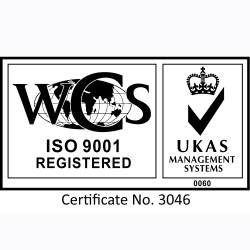
What you need to know and how to make it simple and successful.
Cloud computing offers huge benefits for SMEs. We’ve found, however, the lack of knowledge about the implications and uncertainty of the correct approach to transitioning means that many SMEs don’t feel confident enough to make the move.
So we’ve produced this guide alongside Gamma, to fill in the gaps and give you the confidence you need to transition to the cloud. It’s designed to help you understand the areas that you should be considering and to show you the way forward.
How cloud computing adds significant value
The digital revolution is impacting the behaviors of customers, competitors, employees, suppliers, and partners. Harnessing these changes to compete in today’s markets means fully embracing digital technology. Making better use of technology can deliver competitive advantage by:
- Improving your speed to market
- Increasing your efficiency
- Enabling greater innovation across your business
- Equipping you to be more responsive and more connected to your customers
The digital economy can also level the playing field, enabling you to compete on equal terms with much larger organisations. Size is now less important than having good ideas and an agile approach.
Transitioning to a stronger future
The good news is that cloud computing now provides an attractive and achievable alternative to running your own infrastructure. By transitioning to the cloud, you can:
- Instill greater flexibility across your business
- Improve your speed and time to market
- Take advantage of economies of scale
- Strengthen your IT resilience
- Eliminate your IT capital expenditure
- Lower your IT total cost of ownership
Key considerations for a successful transition
Although cloud computing offers tremendous benefits, it’s not right for every business operation. For the man scenarios where it is the best option, realising the benefits depends on a properly planned transition.
If you’re not a pure start-up, you won’t be starting with a blank sheet of paper. Most companies already have a mix of applications and data running on internal systems. Some of these apps and databases will be easy to migrate to the cloud, others will be more challenging.
Many businesses will end up with a hybrid infrastructure (For an initial period at least) featuring a combination of in-house systems and public cloud platforms.
Working out what should be migrated to the cloud, when to do it and how to successfully manage the transition are all critical steps in the journey to realising the benefits on offer. Whether you’re looking to deliver a comprehensive migration strategy or an individual project, the following key areas should all be addressed:
- Assessing your opportunities
- Planning your transition
- Security and compliance implications
- Managing your migration
- Choosing your supplier
Evaluating your business requirements
You should also review what your businesses IT requirements actually are. In particular, you need to identify areas where the performance of your business is being negatively impacted by the limitations of your current systems.
- Do your current IT systems prevent you from developing new services and deploying new applications?
- Is your employee’s productivity damaged by IT issues (e.g. such as slow running systems, network-related failures or difficulties accessing important data)?
- Could the experience you deliver to your customers be improved (e.g. better access to online services or a faster loading website)?
Considering your future
It’s also important to get your crystal ball out and consider how your business needs might change in the future, points to consider include:
- Are there any new initiatives planned that will require an uplift in IT capability?
- If you need to scale your business quickly to meet increased customer demand, can you existing system cope?
- Are you likely to be making any acquisitions or opening new offices?
Planning your transition
Once you’re given the green light to moving some, or all of your IT systems to the cloud, you need to get planning, as you’ll be aiming to ensure minimal business disruption.
Following the audit of your existing infrastructure, your first consideration is what to put into the cloud.
You then need to establish how the transition will take place, such as what tools will be utilies to support the migration and what in-house resources will manage the migration.
Timing is another big factor, will migrating at a weekend or overnight minimise the impact on your business? Are there critical points in the business year to be avoided (times when you can least afford any disruption)?
Supplier
Your choice of supplier is paramount, heres why choosing us makes better business sense.
Delivering an easy, low risk, low hassle transition to the cloud. We provide easy quoting, ordering and provisioning through an online portal, with friendly helpful human support available when needed.
We offer a wide choice of configuration options and a range of optional services, including both a dedicated Cloud Backup application and an online reporting platform.









